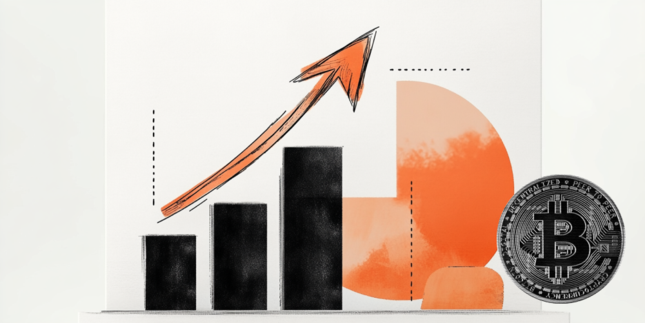Federal Reserve (Fed) Chairman Jerome Powell participated in a moderated discussion titled "A View from the Federal Reserve Board" at the National Association for Business Economics Annual Meeting in Nashville on Monday. Powell noted that while he remains confident that inflation will continue easing toward Fed targets, the Fed Chair acknowledged that the US central bank is set to take further action if the data suggests it necessary.
Key highlights
Risks are two-sided, decisions will be meeting-by-meeting.
The US economy is in solid shape; we intend to use our tools to keep it there.
We have made good progress toward restoring price stability without painful rise in unemployment.
A 50 bps rate cut reflects growing confidence that appropriate policy recalibration can maintain labor market strength and inflation moving toward goal.
Housing services inflation will continue to decline as long as growth rate in rents for new tenants remains low.
Disinflation is broad based, recent data indicate further progress toward sustained return to 2%.
Colleagues and I have greater confidence inflation is on sustainable path to 2%.
Labor conditions are solid, labor market roughly in balance.
Annual GDP revisions were 'quite interesting’.
The labor market may give a better real time picture of the state of the economy than GDP.
There's nothing suggesting a downturn is more likely now.
The Fed is not in a hurry to cut rates quickly, will be guided by data.
Following the Fed head's initial comments, rate markets held onto bets that the next rate cut from the Fed would be 25 bps in November. According to the CME's FedWatch Tool, rate futures are pricing in nearly 60% odds of a 25 bps cut on November 7, with the remaining 40% still hoping for a 50 bps double-cut.
Other Fed policymakers join the Powell chorus
Atlanta Fed President Raphael Bostic echoed Fed Chair Powell's words earlier on Monday, though cautioned that the Fed may have to make further outsized rate moves if the US labor market deteriorates.
Key highlights
I am open to another half-percentage-point rate cut if labor market shows unexpected weakness.
Baseline case is for an 'orderly' easing with inflation expected to continue slowing and job market to hold up.
I do not want to get overconfident on inflation given core personal consumption expenditures price index remains 2.7%.
Business contacts continue to say they do not expect layoffs.
I will be watching upcoming jobs data closely; if employment growth slows much below 100,000 jobs, it would warrant closer questioning of what is happening.
Interest rates FAQs
Interest rates are charged by financial institutions on loans to borrowers and are paid as interest to savers and depositors. They are influenced by base lending rates, which are set by central banks in response to changes in the economy. Central banks normally have a mandate to ensure price stability, which in most cases means targeting a core inflation rate of around 2%. If inflation falls below target the central bank may cut base lending rates, with a view to stimulating lending and boosting the economy. If inflation rises substantially above 2% it normally results in the central bank raising base lending rates in an attempt to lower inflation.
Higher interest rates generally help strengthen a country’s currency as they make it a more attractive place for global investors to park their money.
Higher interest rates overall weigh on the price of Gold because they increase the opportunity cost of holding Gold instead of investing in an interest-bearing asset or placing cash in the bank. If interest rates are high that usually pushes up the price of the US Dollar (USD), and since Gold is priced in Dollars, this has the effect of lowering the price of Gold.
The Fed funds rate is the overnight rate at which US banks lend to each other. It is the oft-quoted headline rate set by the Federal Reserve at its FOMC meetings. It is set as a range, for example 4.75%-5.00%, though the upper limit (in that case 5.00%) is the quoted figure. Market expectations for future Fed funds rate are tracked by the CME FedWatch tool, which shapes how many financial markets behave in anticipation of future Federal Reserve monetary policy decisions.
Fed rate outlook remains uncertain
The Fed opted for a 50 basis points (bps) interest-rate cut following the September policy meeting, bringing the fed funds rate to the range of 4.75%-5.0%. The revised Summary of Economic Projections (SEP), the so called dot-plot published alongside the policy statement, showed that projections imply 50 bps of additional rate cuts in 2024 from current level, 100 bps more in 2025 and another 50 bps in 2026.
The CME FedWatch Tool shows that markets are currently pricing in a nearly 50% probability of another 50 bps rate reduction at the next policy meeting in early November. On Friday, the US Bureau of Economic Analysis reported that the core Personal Consumption Expenditures (PCE) Price Index rose 0.1% on a monthly basis in August, at a softer pace than the market expectation of 0.2%.
Fed policymakers spoke on the policy outlook recently and their remarks painted a mixed picture. Fed Governor Michelle Bowman noted that she prefers a more measured re-calibration of policy and added that she continues to see greater risks to price stability. Speaking again on Monday, Bowman reiterated that "bringing the policy rate down too quickly carries the risk of unleashing that pent-up demand." On a dovish note, Chicago Fed President Austan Goolsbee argued that interest rates need to come down significantly and said that "many more rate cuts" are likely needed over the next year.
Information on these pages contains forward-looking statements that involve risks and uncertainties. Markets and instruments profiled on this page are for informational purposes only and should not in any way come across as a recommendation to buy or sell in these assets. You should do your own thorough research before making any investment decisions. FXStreet does not in any way guarantee that this information is free from mistakes, errors, or material misstatements. It also does not guarantee that this information is of a timely nature. Investing in Open Markets involves a great deal of risk, including the loss of all or a portion of your investment, as well as emotional distress. All risks, losses and costs associated with investing, including total loss of principal, are your responsibility. The views and opinions expressed in this article are those of the authors and do not necessarily reflect the official policy or position of FXStreet nor its advertisers. The author will not be held responsible for information that is found at the end of links posted on this page.
If not otherwise explicitly mentioned in the body of the article, at the time of writing, the author has no position in any stock mentioned in this article and no business relationship with any company mentioned. The author has not received compensation for writing this article, other than from FXStreet.
FXStreet and the author do not provide personalized recommendations. The author makes no representations as to the accuracy, completeness, or suitability of this information. FXStreet and the author will not be liable for any errors, omissions or any losses, injuries or damages arising from this information and its display or use. Errors and omissions excepted.
The author and FXStreet are not registered investment advisors and nothing in this article is intended to be investment advice.
Recommended content
Editors’ Picks

Gold retains solid gains after reaching fresh record highs Premium
Gold price hit yet another record high on Monday, as the US Dollar sell-off continued on the back of US President Donald Trump’s criticism of Federal Reserve Chair Jerome Powell, fueling concerns about the future of the US economy.

AUD/USD eases from fresh 2025 highs, holds above 0.6400 Premium
The Australian Dollar surged against its American rival to a fresh yearly high of 0.6437. The poor performance of Wall Street pushed AUD/USD lower ahead of the daily close, but broad USD weakness is likely to keep Aussie on the winning side.

EUR/USD hovers above 1.1500 as investors drop the USD
The EUR/USD pair traded as high as 1.1574 on Monday, retreating from the over three-year high as fears cooled in the American session. Still, Wall Street edged sharply lower amid concerns about the Federal Reserve's autonomy.

Bitcoin traders celebrate 3.125 BTC halving anniversary with $90K price prediction
Bitcoin price surges past $88,000 on Monday as traders mark the 3.125 BTC halving anniversary amid a rapid shift in investor focus away from USD-based investments.

Five fundamentals for the week: Traders confront the trade war, important surveys, key Fed speech Premium
Will the US strike a trade deal with Japan? That would be positive progress. However, recent developments are not that positive, and there's only one certainty: headlines will dominate markets. Fresh US economic data is also of interest.

The Best brokers to trade EUR/USD
SPONSORED Discover the top brokers for trading EUR/USD in 2025. Our list features brokers with competitive spreads, fast execution, and powerful platforms. Whether you're a beginner or an expert, find the right partner to navigate the dynamic Forex market.



